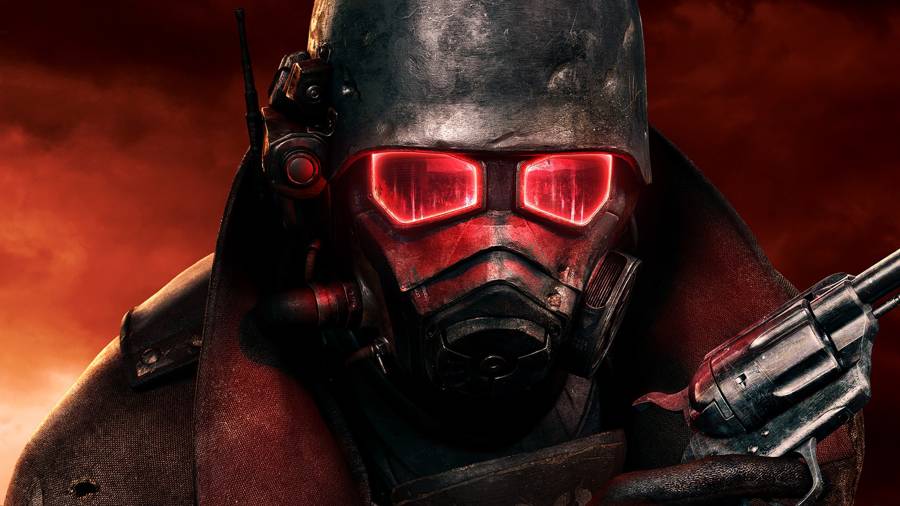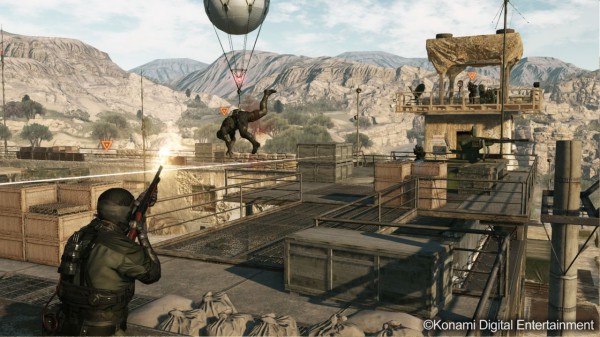

With no single-player campaign in sight, Siege manages the rare feat of keeping players engaged over the course of several hours with only a handful of maps and modes. Its nature of play is very moreish and those who play will find themselves craving just one more round. Gameplay is carved into three-minute rounds in which teams alternate between attacking and defending; since each team is given little time to prepare, tension is ratcheted all the way up to 11 from go to whoa. When you’re defending, it’s imperative to lock down the area as quickly as possible through a combination of barricades, traps, and reinforced walls. While on attack, you’re able to send drones across the map to try and locate the enemy and plan your breach.
Consistently, Siege creates the kind of anxious, pulse pounding action usually reserved for only the best of survival horror. As you frantically prepare to defend from an enemy that can and will appear from all directions, without notice, your palms will sweat and you heart will race. It’s an adrenaline rush of the best variety.
Siege’s strengths and weaknesses are two sides of the same coin. It’s so good because of the limitations it places on players, all of which forcing people to play their role while working as a team. Failing to do so means you will lose, and swiftly. By the same token, hardcore fans and players will burn through the title’s maps and modes in less than a day; after which they’ll need to rely on variations in Operator characters, spawn points and opponents.
Each of the ten maps included at launch luckily feature multiple spawn points, multiple attack/defend locations and plenty of different paths to take, all changing depending on the Operators in play. The three game modes – Bomb, Hostage and Secure Area – are variations on the same theme. Bomb and Secure Area require the attackers to breach a room and hold it for a period of time. Hostage requires the same, adding the requirement for the attackers to extract a hostage to safety. Victory is also possible — and most likely in my experience — by eliminating all players on the opposing team.
Teamwork is key, as is the selection of Operators. Players will quickly learn their own strengths and weaknesses and will naturally be drawn to Operators that suit their play style. At launch, Siege includes ten attacking and ten defending Operators, each with their own unique and useful perk and load out. The aptly named Sledge, for example, is an SAS attacker who comes equipped with a sledgehammer that is useful for smashing open breakable walls and creating line-of-sight for his teammates. On the other hand, Smoke is an SAS defender, complete with remote-detonated poison gas grenades that are perfect for laying a trap and murdering pesky attackers. Other abilities include explosive breach rounds, heartbeat detectors, riot shields, hypodermic revive needles, armour packs, a deployable turret and more.
Finding the perfect combination of Operators for your team will take some time, but all twenty of the included Operators are easy to use and complement each other. What’s more, if you don’t like the one you chose, you can choose a new Operator between each round. One minor frustration is that all Operators are locked until you’ve earned enough Renown — in-game currency — to unlock them. The more you unlock, the increasingly expensive they are. On one hand, it forces players to go through single-player modes like Situations and Terrorist Hunt to get practice, but more often than not it just feels like a ploy for the included microtransactions.
It’s definitely a good idea to practice, but if you’re in a hurry the option to spend real world money instead of time is there. The one other thing of note regarding Operators is that only one person can select each one at any given time. If someone else on your team takes your choice, you’ll have to make do with someone else. If you haven’t unlocked any others, you’ll be stuck with the default Recruit.
Terrorist Hunt is where you’ll spend a good deal of time if you aren’t the multiplayer type. In it, you take on a group of AI either with a team of five or by yourself in Lone Wolf mode. You’ll be faced with exactly the same maps and modes as in Multiplayer, but it helps to learn the maps and is also the fastest way to earn Renown and unlock the remaining Operators.
Siege is not really a pick-up-and-play shooter. It will take time, dedication and patience. Learning its maps, tricks and techniques will keep most players going for a while. With all future maps being made available free to all players, there should be plenty of reason to stick around. The obligatory Season Pass is not entirely terrible as it includes access to eight new operators; provided they aren’t overpowered and game breaking it shouldn’t split the community. Shouldn’t being the operative word. In any case, players will be able to purchase the new Operators if they so choose.
Having spent more time with Siege post-launch, I definitely stand by everything I previously said. This is a hardcore shooter, for hardcore fans. Some franchise players may argue that it’s been dumbed down and lament the lack of a campaign, but they’re still going to be the ones filling up the servers and playlists. Playing in a group of friends is a must and even then, until you know your role, know the maps and know the game you will probably lose. Siege requires, no, demands a commitment and only the most devoted will be able to come out on top. If that’s not you, then maybe Siege isn’t your cup of tea.
Despite having some issues connecting, it seemed to be more to do with one of our teammates internet connection rather then Siege’s servers and once we got games going there was never any problems. Sure, we got annihilated at every turn, but the matches were stable and lag free.
From my time with Rainbow Six: Siege, I can definitely recommend it to hardcore shooter fans. To those gamers who have a dedicated group or clan who will all get together to play, it’s a must-have. For the more casual shooter fan, it’s a maybe. Playing in a group of five people you know makes it a sublime, nail-biting experience.
Rainbow Six: Siege was reviewed from a review event on PC and subsequent playthroughs using full copies on Xbox One as provided by the publisher. Travel expenses to attend the review event were paid for by the publisher.




 Fallout 4: beginner’s tips for surviving outside Vault 111
Fallout 4: beginner’s tips for surviving outside Vault 111 Metal Gear Solid 5: The Phantom Pain Episode 5 – Over the Fence
Metal Gear Solid 5: The Phantom Pain Episode 5 – Over the Fence Vechs' Super Hostile Minecraft Survival Map Downloads
Vechs' Super Hostile Minecraft Survival Map Downloads Dark Souls 2 Walkthrough Part 2: Forest of Fallen Giants
Dark Souls 2 Walkthrough Part 2: Forest of Fallen Giants World of Tanks Guide: The Long Way to the Tiger
World of Tanks Guide: The Long Way to the Tiger